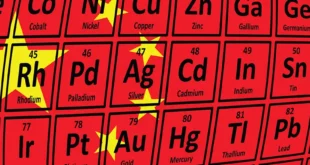Nuclear weapons are probably the last thing the Biden administration wants to worry about right now. But given aggressive Chinese and Russian efforts to build new systems, and America’s aging strategic force, the wizards of Armageddon may be back.
Chinese and Russian advances were highlighted in last month’s annual “Threat Assessment” by the U.S. intelligence community. It said China was planning to double its arsenal of nuclear weapons over the next decade in “the most rapid expansion … in its history.” And it warned that Russia remains America’s closest strategic rival as it “expands and modernizes its nuclear weapons capabilities.”
Unpack this bland language and you see some genuinely scary new threats. China is deploying a truck-based mobile intercontinental ballistic missile, called the Dongfeng-41, that could strike targets in the United States. China also has an intermediate-range mobile missile, the Dongfeng-26, that’s “capable of rapidly swapping conventional and nuclear warheads,” according to Austin Long, a Pentagon strategic planner, in a recent article in War on the Rocks.
What this means for U.S. commanders is that in a crisis, China would have hundreds of hard-to-detect trucks roaming its highways, some carrying nukes and some not — and if the missiles were fired, the United States probably wouldn’t know which were which. That, as the Cold War strategists used to say, would be “destabilizing.”
Russia is tweaking the nightmare scenarios, too. President Vladimir Putin boasted in his April 21 address to the federal assembly that Russia now has a new Avangard hypersonic ICBM, a Tsirkon hypersonic anti-ship missile and a Poseidon nuclear torpedo capable of devastating coastal cities. All these weapons have very short delivery times to defeat U.S. missile defenses. They, too, would destabilize the balance of terror.
Meanwhile, the Pentagon is deliberating how to replace its 50-year-old Minuteman missiles technology, one leg of the “triad” of U.S. strategic forces. Sen. Angus King (I-Maine), who chairs the Senate subcommittee that oversees strategic forces, told me he came away from a visit to a missile silo in North Dakota last weekend wondering, “How would you feel if your survival depended on a car you bought in 1970?”
The Pentagon’s tentative answer is a new silo-based missile known as the Ground Based Strategic Deterrent. “I would say I’m convinced but not fully convinced” that this new ICBM is the answer, King told journalists after the visit. Some other analysts argue that the United States should instead emulate the Chinese with a mobile ICBM system of our own, though it’s doubtful any state would welcome this nuclear caravan now any more than when it was first proposed in the 1980s.
The Biden administration’s main interest in nuclear weapons so far has been limiting them. After just six days in office, Biden agreed to extend for another five years the New START treaty with Russia, which limits each country’s warheads. But the treaty doesn’t cover China, and that’s the problem. Beijing doesn’t want to talk about curbing its nuclear forces until it reaches parity with the United States and Russia.
“The Chinese are modernizing their nuclear deterrent, and ours is aging. That’s the big story,” argues David Finkelstein in an interview. He directs China and Indo-Pacific security studies at CNA, an independent research institute in Arlington.
Why is China moving so quickly to jettison its old doctrine of a “limited deterrent” and double its nuclear forces? U.S. analysts aren’t sure, but some judge that the Chinese may want to make any U.S. effort to defend Taiwan militarily exceptionally costly. Beijing wants a low-cost walkover in Taipei, not a bloody assault.
“The last thing on China’s mind is a D-Day style invasion” of Taiwan, contends Christopher Johnson in an interview. He’s a former top CIA China analyst who’s now the chief executive of China Strategies Group, a political risk consulting firm. He notes that China has halved its number of short-range missiles opposite Taiwan but boosted deployments of missiles for striking U.S. bases in Guam and Japan.
China’s accelerating nuclear program vexes American analysts. During the Cold War, the United States and Russia developed a language for thinking about nuclear weapons and deterrence. Leaders of both countries understood the horrors of nuclear war and sought predictability and stability in nuclear policy. China lacks such a vocabulary for thinking about the unthinkable.
Russia and America have some severe problems these days, but they know how to talk about arms control. Even as the Biden administration thinks about building a new generation of doomsday weapons, it needs to sit down and begin a conversation with China about strategic forces that’s becoming more urgent every day.
 Eurasia Press & News
Eurasia Press & News



